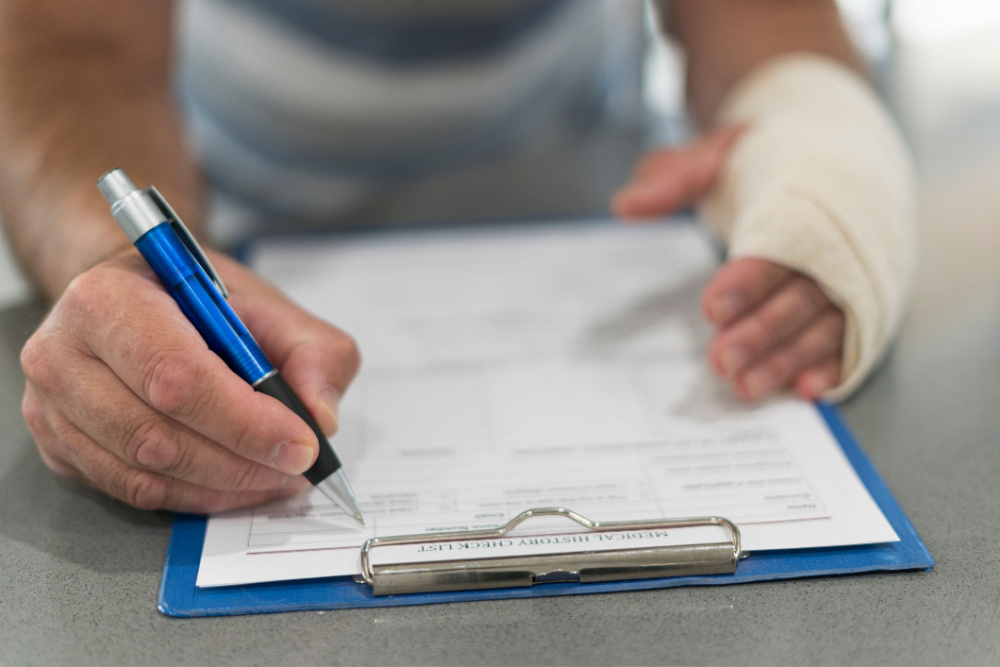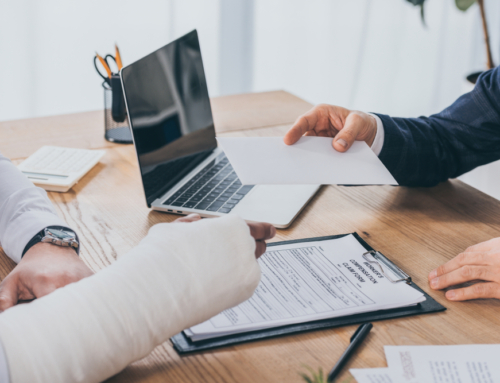When you’ve been injured in an accident, the last thing you want to think about is filing a claim and taking legal action. But it’s important to understand that having a qualified and experienced personal injury attorney handle your case can make all the difference in obtaining maximum compensation for medical bills, lost wages, pain and suffering, and other losses from your accident. In addition, learning how to file a personal injury claim correctly can help secure your financial stability during this difficult time and ensure that justice is served no matter what obstacles may arise. In this article, we’ll outline each step involved with filing a successful personal injury claim with an experienced attorney so that knowing what to do next becomes a painless experience for all involved.
Identify the Legal Basis for Your Claim
Careful identification of the legal basis for your claim is of utmost importance when seeking to protect your rights or recover damages. Building a solid foundation upon relevant legal principles, statutes, and case laws that support your position to achieve a favorable outcome in any legal dispute or negotiation is indispensable. By conducting a thorough legal analysis and research, you will be able to pinpoint the specific legal provisions that govern your situation and establish the necessary elements of your claim, which will ultimately serve as the cornerstone of your argument. Furthermore, such diligence in forming a well-founded legal basis enables you to advance compelling arguments, anticipate potential counterarguments, and efficiently navigate the complexities of legal proceedings. This increases the likelihood of achieving a desirable resolution that safeguards your interests and vindicates your rights.
Gather Evidence of Liability and Damages
Gathering evidence for liability and damages is critical to successfully navigating a legal claim. It allows parties to build a compelling case that substantiates their claims and bolsters their argument. Therefore, it is crucial to accumulate diverse evidence that thoroughly examines the incident to establish a strong foundation. This may include eyewitness accounts, expert testimony, documentation of injuries, and any other pertinent information that can substantiate one’s claims. In addition, maintaining organization and methodically preserving the gathered evidence is essential for presenting a structured argument in a court of law. As a result, collecting and managing evidence that outlines liability and damages contributes to the efficacy of the claims process and ensures that justice is afforded to the aggrieved party.
Determine the Best Method to File Your Claim
Determining the best method to file your claim can be challenging, especially when there is an array of options and the stakes are high. It is essential to weigh the pros and cons of each method available to you, considering the nature of your claim, the amount in dispute, the parties involved, and the likelihood of success. Analyze the level of legal support you might require and consider consulting a qualified professional well-versed in the subject matter. Take note of the applicable deadlines in your jurisdiction, and familiarize yourself with the procedural aspects of each method so that you choose the one that would most efficiently and effectively address the complexities of your claim. By conducting a thorough evaluation and making a well-informed decision, you can optimize your chances of reaching a favorable resolution promptly.
Choose an Experienced Personal Injury Attorney
Selecting an experienced personal injury attorney is a crucial decision, as it can significantly impact the outcome of your case. When faced with an injury caused by someone else’s negligence, you deserve a legal professional with a wealth of knowledge and expertise in navigating complex litigation processes. An attorney with an extensive background in personal injury claims will not only understand the intricacies of the legal system but can also negotiate skillfully with insurance companies and opposing counsel. In addition, choosing a seasoned practitioner increases the likelihood of obtaining a favorable settlement, ensuring you receive the compensation you need to recover from your ordeal. Ultimately, your well-being and financial stability depend on the proficiency of your chosen legal representative – do not leave this vital decision to chance.
Explore Common Legal Strategies in Personal Injury Claims
Delving into personal injury claims, one can discern various legal strategies frequently employed to secure a favorable outcome. Among these approaches, compiling a robust and comprehensive collection of evidence is the linchpin to substantiating the severity and legitimacy of an injury. Such evidence often comprises medical records, photographs, eyewitness accounts, and expert testimonies, thereby painting a vivid and convincing picture for the jury. Inversely, defense attorneys may attempt to counterclaim by scrutinizing and questioning the authenticity of the claimant’s injury or by asserting contributory negligence, which implicates the victim’s role in causing their own harm. Furthermore, skilled lawyers strategically engage in negotiation to arrive at mutually agreeable settlements without resorting to a trial, thereby vastly reducing costs and expediting the resolution. These common legal pathways provide a framework for successfully navigating personal injury claims’ intricate and often high-stakes arena.
Prepare Documents and Files Needed to Make a Claim
The process of preparing the documents and files needed to make a claim may first appear intimidating, but with a comprehensive and organized approach, it becomes a manageable task that is crucial to protect your interests. First, it is essential to familiarize yourself with the specific requirements and guidelines established by the entity you plan to submit the claim to. This ensures that all necessary documents are gathered effectively. Furthermore, it is vital to maintain a systematic record-keeping system that includes accurate categorization and dating of all files, as this will expedite the retrieval and compilation of relevant documentation. Additionally, securing physical and digital backups of the files is fundamental to safeguard against loss or accidental damage.
Furthermore, taking a proactive stance in obtaining supporting evidence, such as photographs, receipts, and statements from witnesses, can significantly augment the strength of your claim. Finally, it is advisable to invest time in reviewing the compiled documents for completion and accuracy and engaging in a clear and concise communication process with the concerned parties to avoid unnecessary delays or complications. By diligently adhering to these steps, you can assemble a compelling and convincing claim that effectively represents your position in a formal setting.
Working through the process of filing a personal injury claim on your own can be a daunting experience. That is why it is highly important to ensure you are prepared with the necessary evidence and documents before filing, as well as enlist the services of an experienced personal injury attorney who can guide you in making the right legal strategies for your claims. With enough time and effort spent gathering crucial materials and understanding your rights, you can put yourself in a position to see justice done. An experienced personal injury lawyer will prove invaluable in giving you sound legal advice and providing skilled representation in court.








